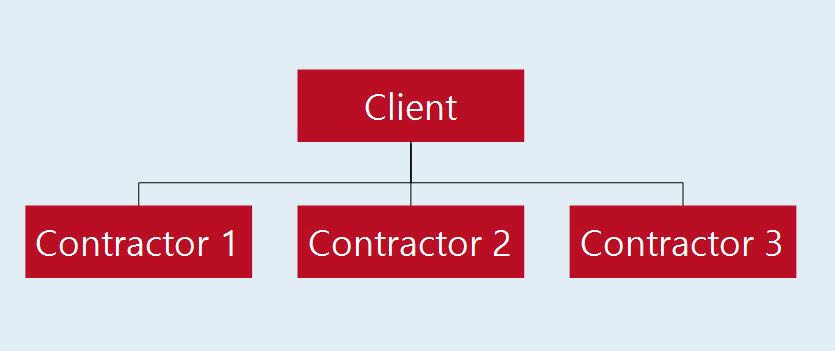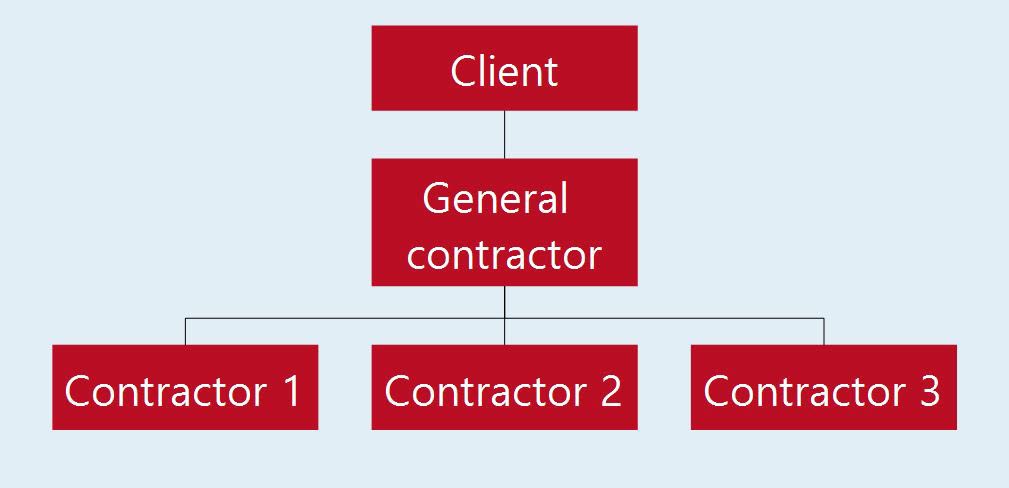Types of contract and procurement
In procurements and contracts, clients and contractors have different roles and thereby different legal responsibilities. The division of responsibilities between the parties depend on the type of contract.
Type of contract
The client needs to prepare clear RFQ documentation for procurement of contractors. The RFQ documentation shall clearly present the type of procurement as well as requirements and provisions for the contract. It is the client who decides on the type of contract, procurement and compensation for a project.
There are two main types of contracts in Sweden:
- Design-build contracts
- Construction contracts where design is the client's responsibility.
Most construction procurement in Sweden is performed using two standard contracts. These are ABT 06 for design-build contracts and AB 04 for construction contracts where design is the client's responsibility.
The terms design-build contracts and construction contracts have no legal significance. It is the provisions that the parties have agreed on in the specific case that determine what applies between the parties.
Division of responsibilities in design-build contracts
The client transfers the responsibility for project design and performing the contract to a design-build contractor.
The design-build contractor is responsible for ensuring that the contract meets the functional requirements that are in the contract documents. The design-build contractor is responsible for possible faults and deficiencies in the contract works.
Division of responsibility in construction contracts
The client performs the project design for the contract and is responsible for that function in the contract works.
The contractor is responsible for professional performance based on the documents that the client has provided.
Types of procurement
There are two types of procurement in Sweden:
- Divided contract
- General contract.
The type of procurement regulates the relationship between different contractors and the number of contractors that the client procures. It must be clear in the RFQ documentation what type of procurement is applied.
Divided contract
The client procures and has agreements with all contractors needed for the construction project. The various contractors become parallel contractors to each other.

General contract
The client procures one contractor that becomes the general contractor. The general contractor in turn procures the subcontractors needed for the construction project and signs its own contracts with them. The subcontractors become parallel contractors to each other.

In a coordinated general contract, it is the client that first procures and has agreements with all contractors needed for the construction project. Then, one contractor, usually the building contractor, becomes the general contractor and takes over the developer's contracts with the other contractors. The rest of the contractors become parallel contractors to each other.
New types of collaboration
New types of collaboration between clients and contractors have been developed recently. Partnering or collaboration contracts involve a close cooperation between the client and contractors where the parties often work towards a common cost target and share profits or additional costs, so-called incentive agreements. This type of contract includes an agreement for collaboration. The implementation is usually regulated through standard agreements according to AB, ABT, etc.
Public Procurement Act, 2016:1145
The current Public Procurement Act (Lagen om Offentlig Upphandling, LOU) entered into force on 1 January 2017.
This Swedish legislation is aligned with EU requirements on public procurement and has several fundamental principles. These are non-discrimination, equal treatment, transparency. proportionality, and equal recognition.
The purpose of the act itself is to prevent corruption and discrimination while promoting the effective use of public funds.
There are only three evaluation models with LOU. Lowest price or lowest total cost or the most economically advantageous. The RFQ should clearly specify which model is used. The lowest price means the lowest face value price being offered to perform or supply the goods or services. For lowest cost a whole of life cycle analysis method is often used. If the most economically advantageous method is specified, then other factors are also included in the evaluation of the bid. These may include: social, environmental or sustainability considerations; the quality of the product or service; delivery time; the economic stability of the company; etc. These factors are then weighted and a points system is used to evaluate bids.
Note that there are strict rules for the announcement of public contracts and that the tenders must be submitted on time and fully comply with RFQ documentation requirements to be considered.
Further information
Boverket may not provide additional information to what is stated on the website. The subject is outside Boverkets responsibility.
Was the information helpful?
We’re glad the information helped you! Tell us what you thought was good so we can get even better. Please note that you will not get a reply.
You can help us even more by filling out why you did not think the information was helpful. Please note that you will not get a reply.